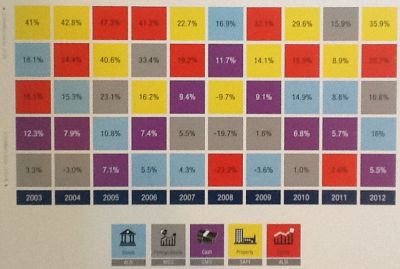What Stockbroker Asset Allocation Can Do For Your Forecast Management
In what was for a startling time my favourite cafe in the world, I came across this ‘how I got rich’ book.
I found it a particularly galling read. Not just because of my usual contempt for people that make a living this way (and in this case, there weren’t even any direct “investments”, only funding those that gambled on stocks at arms length anyway).
Still, always looking to learn, I was reeled in by the central premise;
Asset Allocation Drives Everything
Quoting 1986 research, the author stresses “that asset allocation is the primary determinant of a portfolio’s performance”. To an eyebrow-raising 92% extent, in fact. So, what exactly is it?
“Asset allocation is the art of blending a portfolio of assets from different asset classes to meet the needs of an investor.
An investor’s strategic asset allocation is based on their time horizon, risk tolerance, income and capital requirements and the risk inherent to different asset classes.”
Now this grabbed me.
It doesn’t take much imagination to see how these words apply to our dear old forecasts.
The potential deals in our territory are very much our ‘portfolio’.
Our assets are very similar too. We also have deadlines, comfort zones, returns and available resource constraints to consider.
Possibly the graphic with most resonance to us, sought to examine five different types of ‘asset’. In this casino bank case; bonds, foreign equity, cash, property, equity.
(I realise the pic I took may be a little hazy on a small screen, so here’s my original photo).
In our world, we could just as easily think of different projects, products, sectors or other demarcations on whatever we sell.
I loved this chart.
I instantly thought of so many applications for this. Your ‘five colours’ could signify any aspect of a deal. Imagine taking the main competitor and assessing the margin that results when against them in this way. Or the overall ‘score’ (like a goal difference) when on a bid opposite them.
Then there’s the ultimate. Placing a layer on top for your personal process.
Every time you look at it, you can see something different. In fact, the author uses the tracing paper technique to highlight (with a translucent page on top) his preferred message;
“a well diversified portfolio provides protection on the downside and growth on the upside”
The author’s point translates well into selling.
It’s a reminder to balance not keeping all our eggs in one basket, with choosing from the most fertile-looking turf.
With the wrap-around caveat that you must bear in mind and stick closely to your ideal prospect profile.
How diversified is your forecast? How better could you ‘allocate your assets’?


